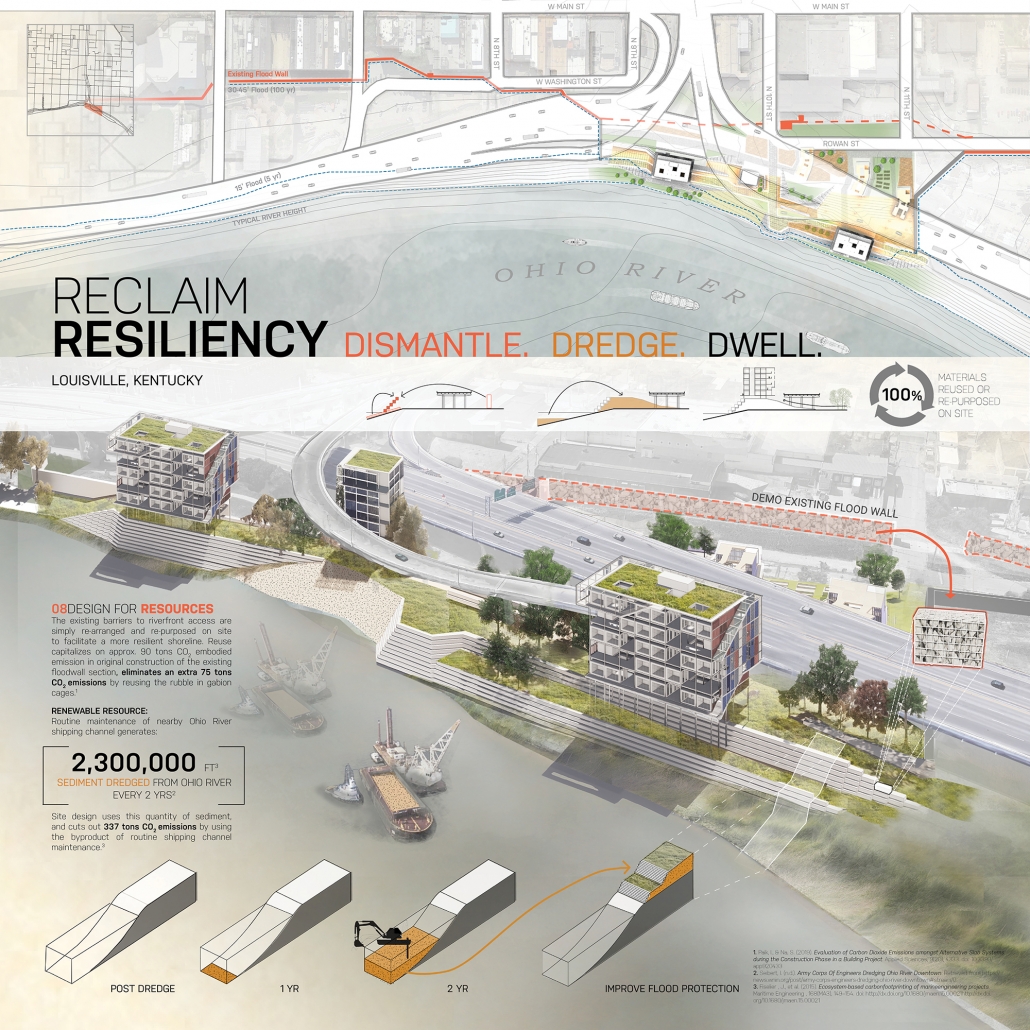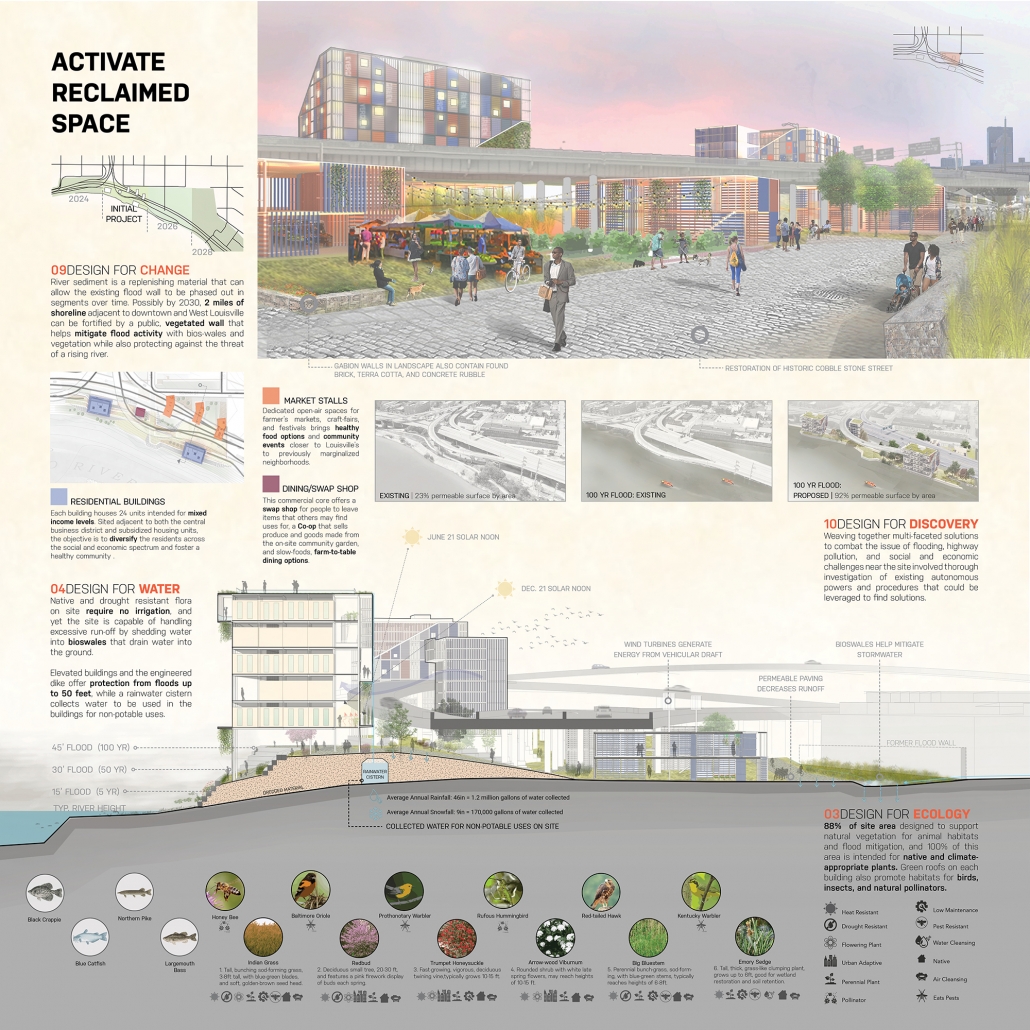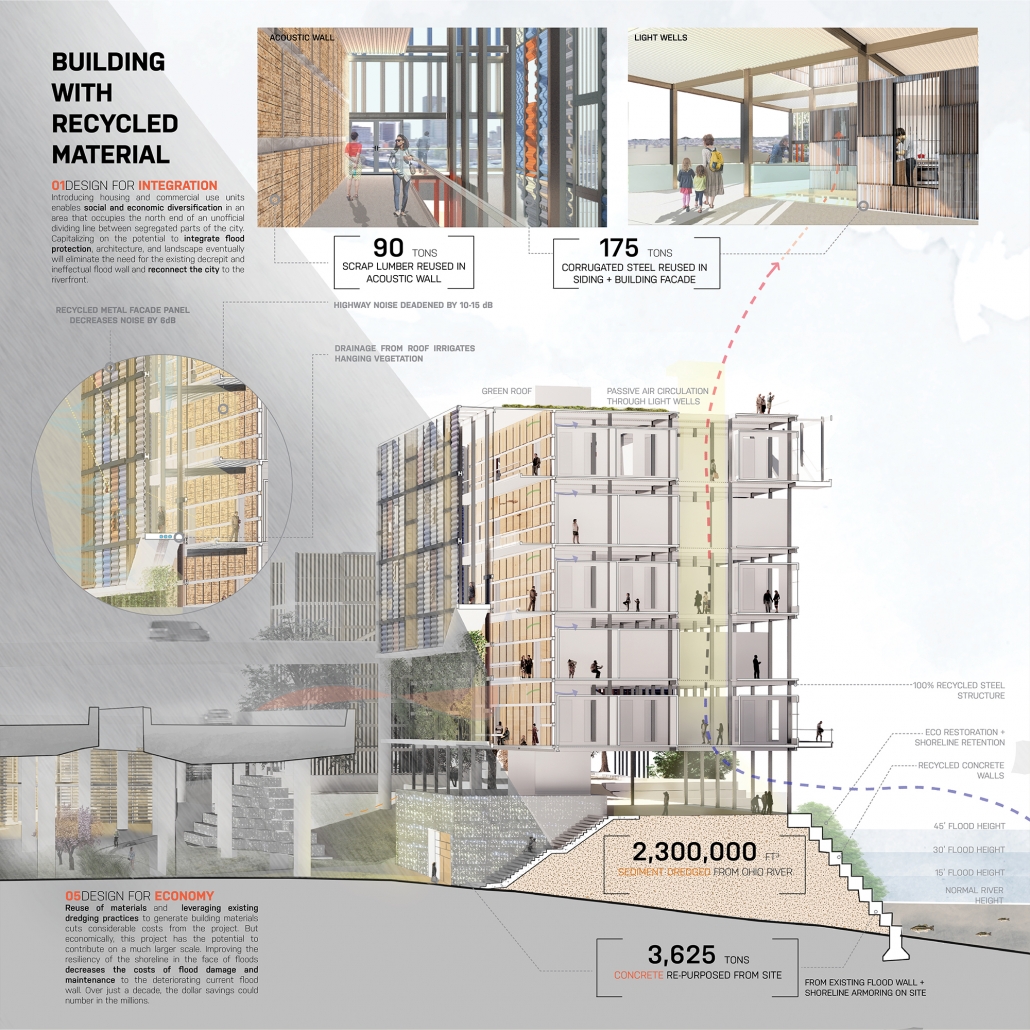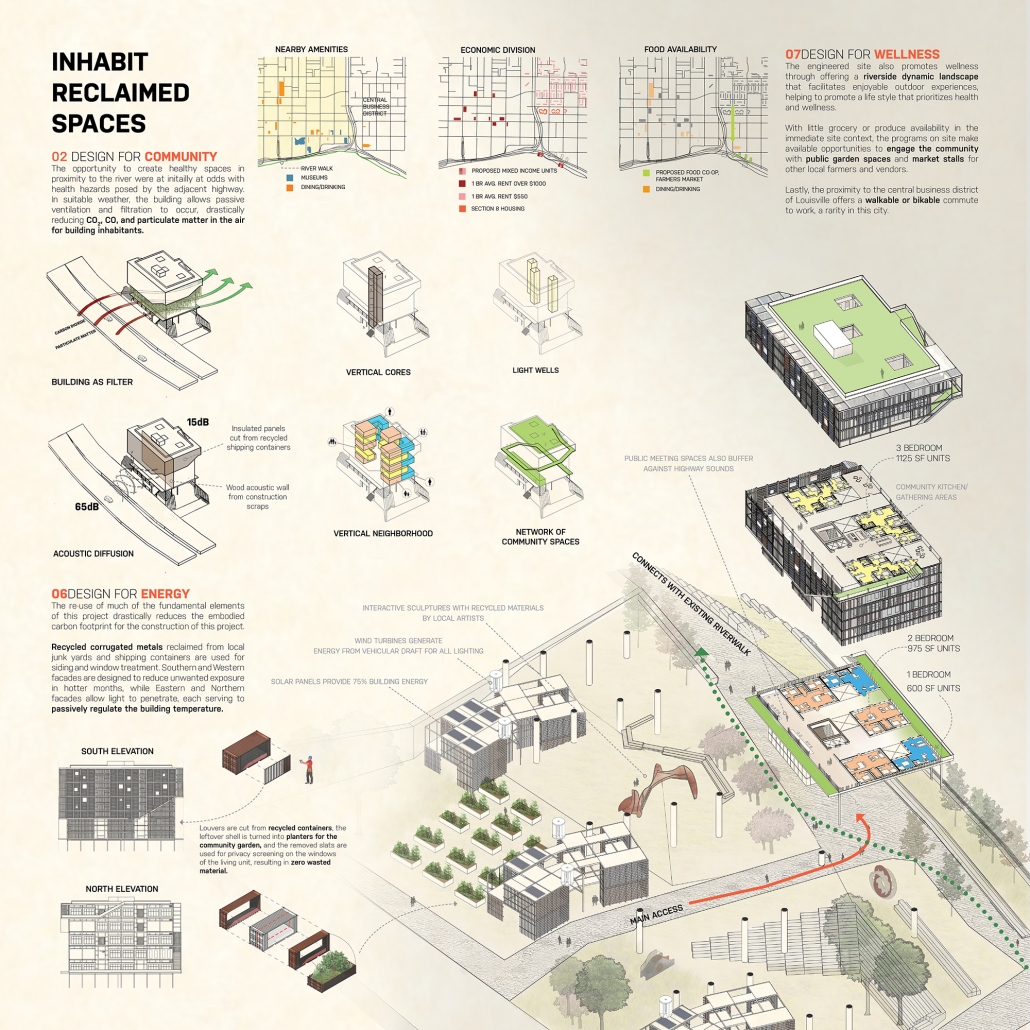2020 COTE Top Ten Winners
Winner: Reclaim Resiliency – Dismantle. Dredge. Dwell.
Ryan Bing & Joe Scherer
Reclaim Resiliency – Dismantle. Dredge. Dwell.
Students: Ryan Bing & Joe Scherer
Faculty: Ulrike Heine, David Franco and George Schafer
School: Clemson University
Juror Comments
Reclaim Resiliency poses an intriguing question on how do we design the environment? The submission graphics clearly show a sense of place in the skillfully rendered drawings. These students understand ecology and how to design and connect all the elements in a striking way. The projects attention to trans-species design is compelling and innovative.
Project Description
“Reclaim Resiliency: Dismantle. Dredge. Dwell.” is a project which focuses on reconnecting Louisville with its riverfront, while integrating permanent flood protection, opportunities for food security and community engagement, and mixed income housing into built solutions. While doing so, the landscape and the buildings are investigations in how to address the unique issues of re-inhabiting abandoned spaces under and around highway infrastructure, while also capitalizing on recycling opportunities on site and near the site.
By dismantling physical and socioeconomic barriers that have previously prohibited the wellness of area inhabitants, this project rejuvenates riverfront access and creates opportunities for the well-being of residents and nearby residents. In removing the physical barrier to the riverfront, and dismantling the aging, decrepit flood wall on site, this project rejuvenates riverfront access and creates opportunities for the well-being of residents and nearby residents. Using renewable, recycled, and repurposed materials, some of which are the old flood wall itself and byproducts of existing processes, such as dredged sediment from routine shipping channel maintenance in the adjacent Ohio River, this project is able to offer resilient flood protection and reclaim a lost space. By reusing the concrete from the existing flood wall in gabion caged retention walls, this new, resilient landscape enables people to dwell permanently, safe from environmental dangers, while also saving over 400 tons of carbon dioxide emissions in just a single phase of completion. Temporary concrete connections back to the existing flood wall can also be recycled in each new iteration, as the proposed form of flood protection stretches out along the shoreline. Over time, this proposed process has the ability to restore almost 2 miles of shoreline access with both public spaces and areas that are optimized for dwelling, while also offering full flood protection from the Ohio River and improving the city’s ability to absorb flood waters.
By introducing mixed income housing and commercial use units in this part of the city, the project promotes social and economic diversification in an area that occupies the north end of an unofficial dividing line between segregated parts of the city. With little grocery or fresh produce availability in the immediate site context, the programs on site make available opportunities to engage the community with public garden spaces and market stalls for other local farmers and vendors. It also offers spaces for a “Swap Shop” to help promote reuse of clothing, everyday objects, and ultimately contribute to the notion of extending the life of all materials, in an effort to promote a more circular economy.
This dynamic landscape facilitates enjoyable outdoor experiences for all members of society, and promotes a life amongst the residents and nearby residents that prioritizes health and wellness. Special considerations were taken to design the building to filter pollution from the air, and deaden highway noise for building inhabitants. The proximity to the central business district of Louisville offers a walkable or bikeable commute to work, a rarity in Louisville.

 Study Architecture
Study Architecture  ProPEL
ProPEL 



